 A monastery getaway in Austria
A monastery getaway in Austria
Would you like to escape the hustle and bustle of everyday life and immerse yourself in an oasis of peace? Then a getaway in a monastery in Austria is just the thing for you! There are many monasteries in Austria, but only a few offer guests the opportunity to experience everyday monastic life for a while. In many monasteries, you as a guest can take part in prayer and meditation times, practice silence or simply enjoy the wonderful nature around the monastery.
Melk Abbey in Lower Austria is one of the most famous monasteries in Austria, which also accepts guests. Here you can stay in one of the guest rooms and take part in the daily services and prayer times. Guided tours through the impressive monastery complex and the baroque garden are also offered.
If you like it a little more secluded, you should take a look at the St. Georgen Monastery on Lake Längsee in Carinthia. Here you can stay in simple rooms or even in the guest house of the monastery and relax in the idyllic landscape of Carinthia. A meditation room is also available.
Find here an time out in the monastery not only offers a welcome change from everyday life, but also the opportunity to find yourself and recharge your batteries.
Map of the monasteries in Austria
Monastery vacation in Austria
We have taken short vacations in numerous monasteries in Austria. We have collected our impressions here in the blog.
- Time out in the monastery in Stams Abbey in Tyrol
- Excursion destinations in Styria - Rein Monastery and Maria Straßengel
- Largest monastery library and Gothic Museum in Admont Abbey
- Enjoy a break in the Lambach Abbey or the Reichersberg Abbey
- Monastery on the Danube in Austria: Baroque Treasures and Highlights
- Göttweig Abbey in the Wachau in Austria
- Melk Abbey in Austria, baroque monastery in the Wachau
- Abbey Library, Monastery and Gallery in Lilienfeld Abbey
- Cistercian Monastery Heiligenkreuz
- Heiligenkreuz Abbey and Mayerling Castle
- Enjoy monastery beer and gardens in Schlägl monastery in the Bohemian Forest
- This is what a monastery holiday in the Benedictine Abbey of St. Paul in Lavanttal is like
- Baroque collegiate church in Schlierbach, Upper Austria
- Monastic gardens in Lower Austria
- Wernberg Monastery in Carinthia: from Brennesselschloss to guest monastery
- Detoxify your body? Let's go to the monastery! Get fit quickly.
- Monastery fasting in the Pallottiner Schlössl in Salzburg
Three monasteries in Austria - a temporary break
We visited three monasteries in Austria, which could not be more different, with Elena from Creativelena and Angelika from Wieder Unterwegs from Styria to the Mühlviertel in Upper Austria. Klösterreich, with whom we have already explored the monastery gardens in Lower Austria, had invited us to visit three monasteries. We hoped for a few days break in the silence behind the monastery walls.
The three monasteries in Austria offered us that, but in different ways. Let yourself be transported to three monasteries in Austria. We visit
- St. Lambrecht Abbey in Styria
- the Sisters of Mary of Carmel in Bad Mühllacken
- and in Bad Kreuzen in Upper Austria
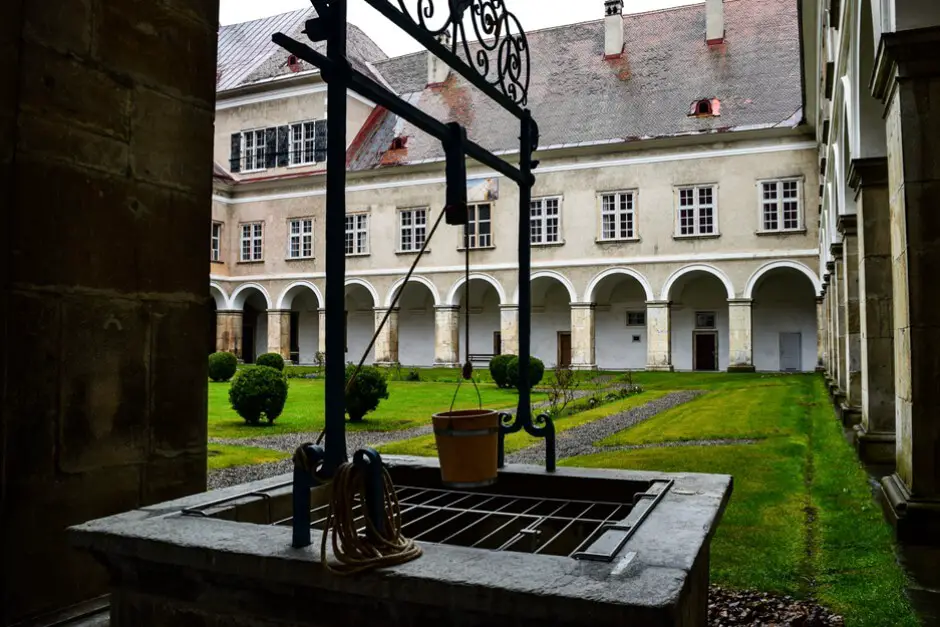
St. Lambrecht Abbey in Styria
We travel via the A10, which takes us from Salzburg to the south, until our navigation device steers us onto the main road at Altenmarkt im Pongau. Immediately behind Radstadt we are sent higher up into the mountains on the highway 99, until we pass the last winter snow at Obertauern before we drive through lonely mountain landscapes and remote mountain villages in the direction of Murau.
The route gives us the feeling of leaving the modern world and of going back in time to a life without hassle. The people of this region lead a hard life. If we can judge by the deserted mountain farms, many have given up and moved out to find a lighter life elsewhere.
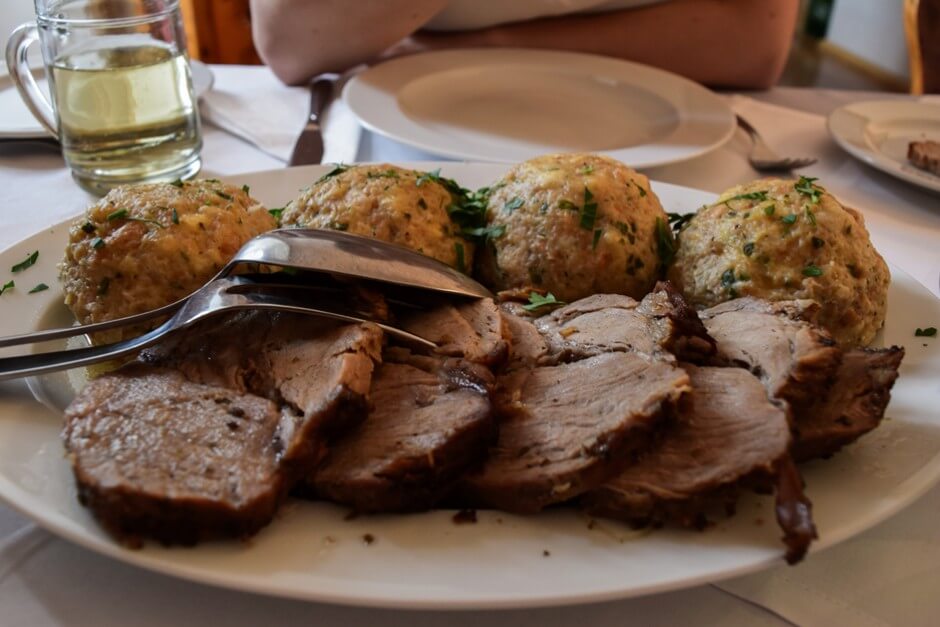
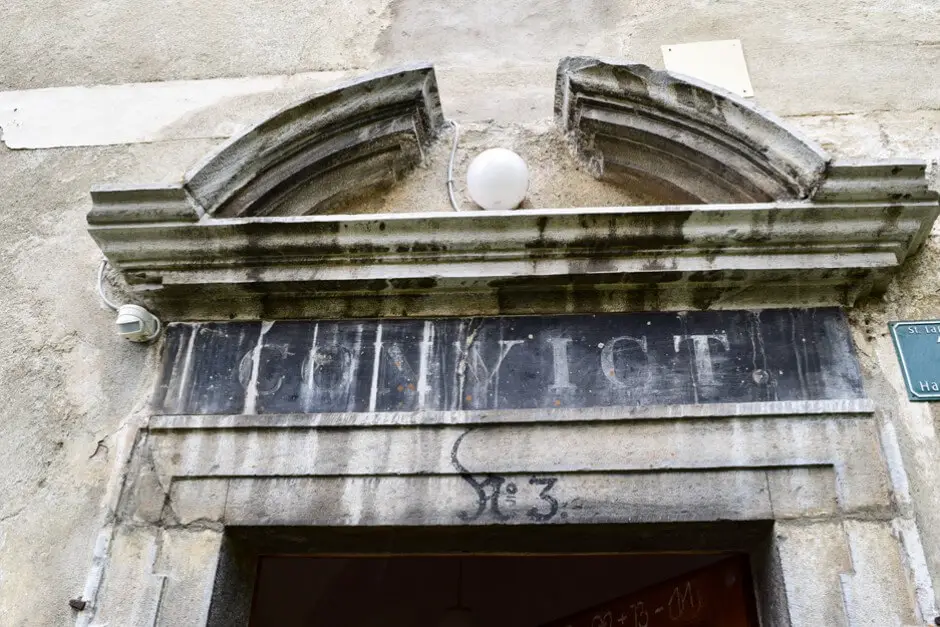
This is how we live in the Benedictine monastery
A few kilometers past Murau, the Benedictine Abbey of St. Lambrecht finally appears in the town of the same name. It dominates the place. A monastery building, which encloses several courtyards, dominates all the surrounding buildings of the place. We ask ourselves through to the Kanzley, where Father Gerwig Romirer, Prior, Hofmeister, Head of the "School of Life", Pastor, Priest and Spiritual Assistant at the Catholic Educational Institute, receives us. After a lunch that does not quite match the fare we expect in a convent with pumpkin soup and roast beef with dumplings, we move into our rooms in one of the abbey's outbuildings.
Our room
Our room is simply furnished. Only a table, a bed, and shower await us. “Twenty years ago, our guests — even if they didn't know each other — were accommodated in double or multi-bed rooms. The washing facilities in the room consisted of a sink. The shower and toilet were in the corridor. Today nobody is willing to accept such accommodation, ”laughs Father Gerwig. You adapt. We even go so far that he planned two single rooms for Petar and me. Since a double room is available, we are happy to accept it.
Luxury should not be expected, however, television and radio are completely missing. Internet access is only available in the rooms of the School of Life in the main building of the Abbey. Whoever comes here, seeks silence and tranquility. And he finds it. For us, who spend only one day, this is an unfamiliar experience. Whether we would endure in the long run, I dare to doubt, however.
The baroque garden of St. Lambrecht Abbey
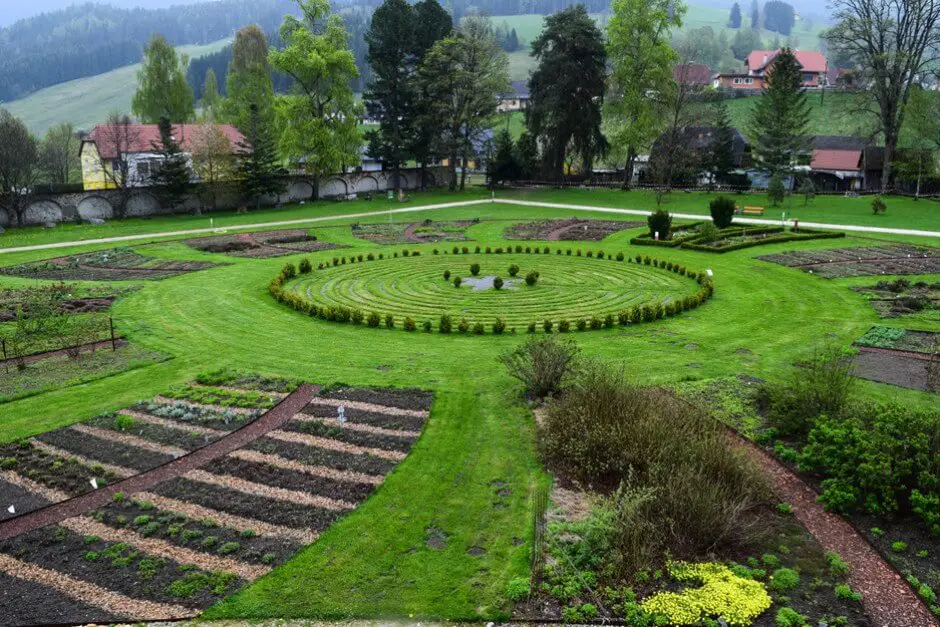
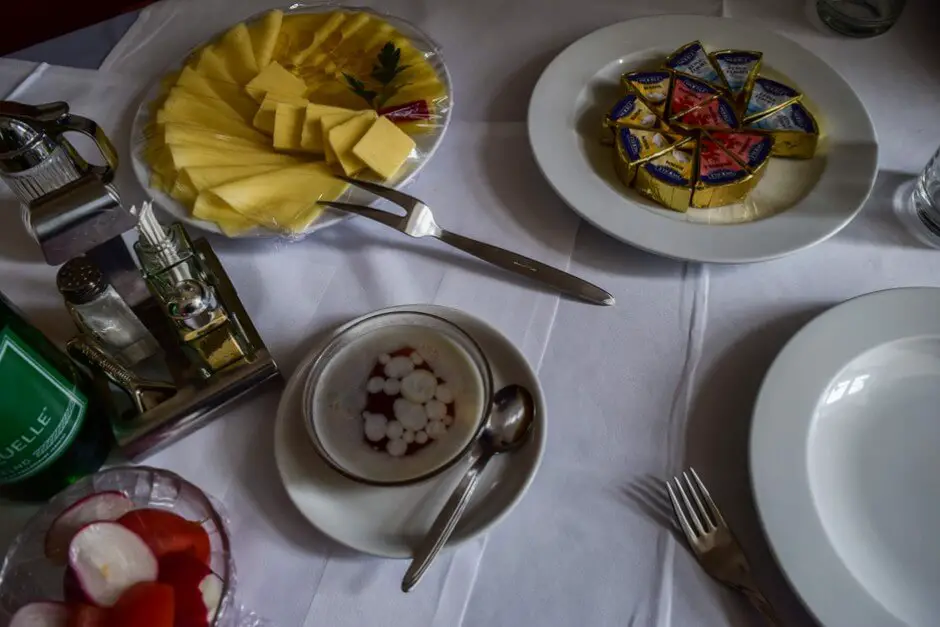
In the afternoon we visit the baroque garden of the monastery. This is brought to life by the club domenico after decades of fallowing. The garden is divided into four parts, each dedicated to one element: earth, fire, air and water. In one quarter of the garden one plants medicinal herbs after the model of Hildegard von Bingen. The next symbolizes creation as a gardener. In this part of the garden the stars are represented in the form of stones. The next part is followed by a rose garden, whose flowers are processed into rose salt, rose jelly and rose vinegar. The rose jelly we try the next morning for breakfast. The last quarter represents the element of water, represented in the central fountain and in the paths that represent the four streams of paradise. The garden is part of a project that integrates the long-term unemployed back into the working world.
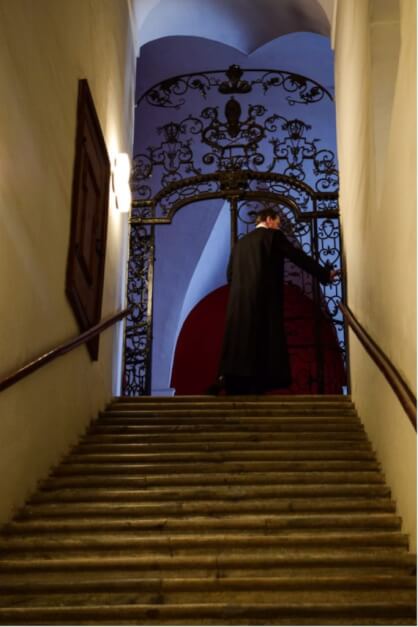
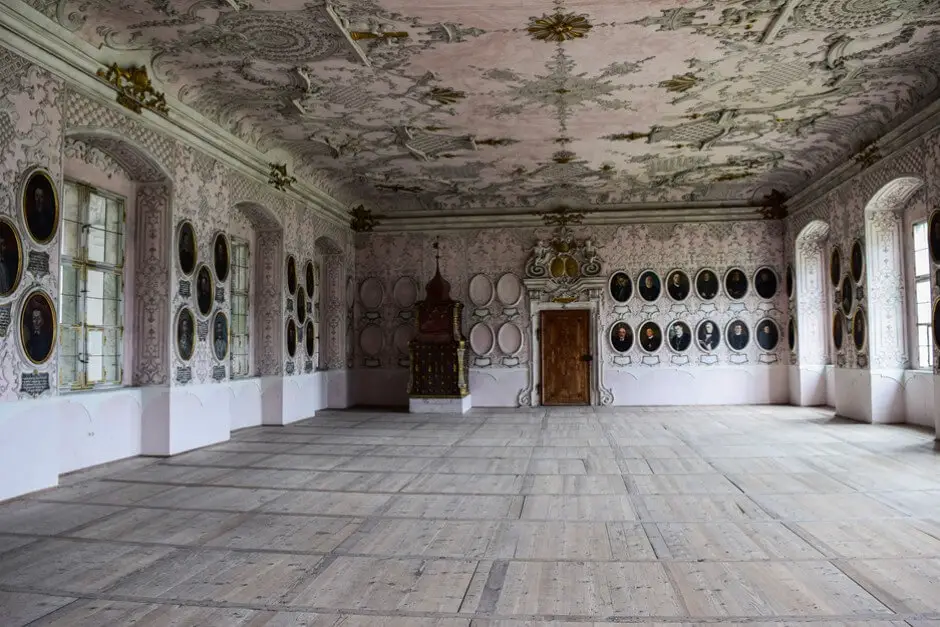
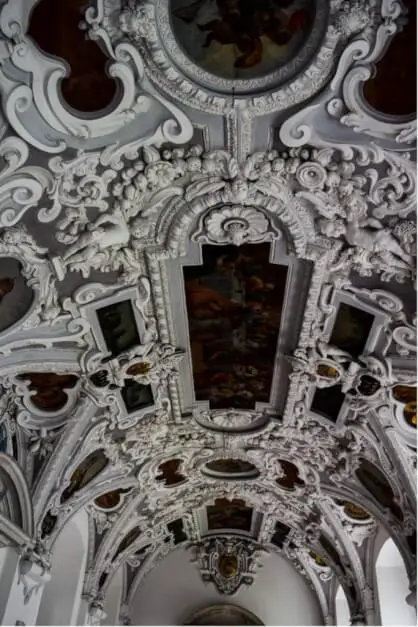
Well worth seeing is the Abbey Museum
Worth seeing is the Abbey Museum, where you can see works of art from the chapel of St. Peter, which is also located on the abbey grounds. It is currently being restored and is therefore closed. In the museum, the altars and sculptures can be visited.
Benedictine monastery St. Lambrecht
Hauptstraße 1
8813 St. Lambrecht
info@stift-stlambrecht.at
T + 43 3585 / 2305 - 0
More tips for Styria
- A trip worth it to the nearby Murau in the Mur Valley.
- One is beautiful Hike around the collegiate area around.
- Discover Rein Abbey and the pilgrimage church Maria Straßengel not far from Graz.
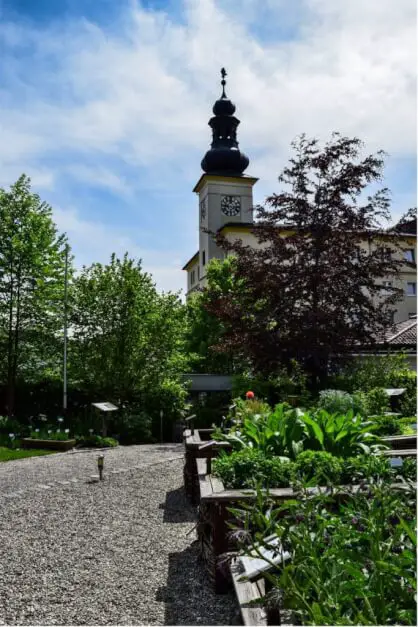
Sisters of Mary of Carmel offer Kneipp and Traditional European Medicine (TEM)
Quite different are the other nunneries we visit on our trip to Upper Austria. Both are run by the Sisters of Mary of Carmel. The first of these nunneries is located in Bad Mühllacken at the entrance to the Pesenbachtal, the second is located on a hilltop in Bad Kreuzen and offers a view of the Alps on the horizon. Both nunneries do not look like a religious institution at first sight. Rather, they are reminiscent of spa hotels or wellness hotels and are also located in a beautiful landscape. Only when we meet the sisters, it becomes clear that they are run by the Order of the Sisters of Mary.
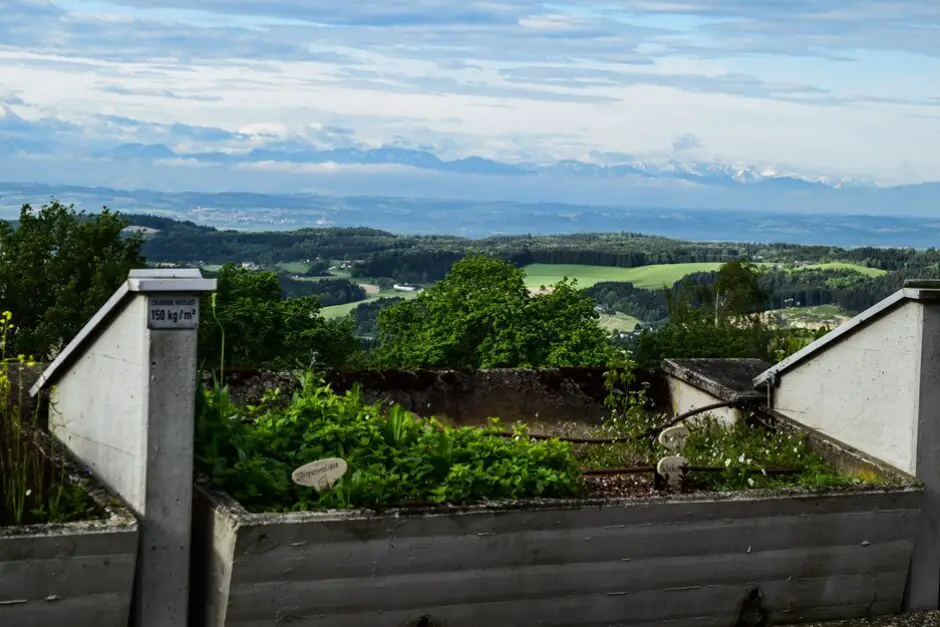
Treatments according to Traditional European Medicine
The sisters work in the spa. They administer showers and help with the Kneipp treatments. They also look after the herb garden.
Both houses offer treatments based on Traditional European Medicine (TEM). These begin, for example, with the movements of Wyda, a type of Celtic yoga. This was already practiced by the Druids. It is still practiced in Irish families today through tradition. Other sources of this treatment approach are the Greeks. Hippocrates' four-humor theory is just as important as Hildegard von Bingen's monastery medicine with cupping, bloodletting and herbal remedies from the barbers and herbalists of her time. Other influences come from Paracelsus with his signature theory, Rudolf Steiner and Pastor Sebastian Kneipp, who with his 5 pillars of life, water, exercise, nutrition and our medicinal herbs provides the basis for traditional European medicine.
Holistic treatment in TEM
Treatment according to Traditional European Medicine is about treating the whole, not the symptoms. TEM tries to restore the balance between the four body fluids sanguis, phlegma, cholé and melancholé. To do this, the archetype of each guest is first determined. Is he sanguine, phlegmatic, choleric or melancholic? Or - even better - a mixed type?
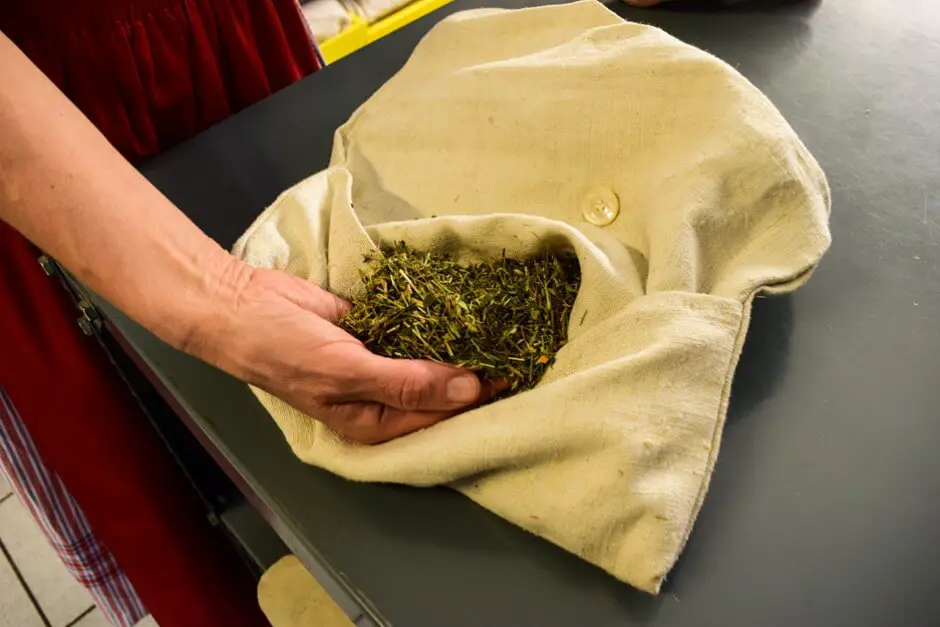
This is how a TEM scrub works
We get a TEM peeling, during which we learn about this procedure. The whole thing seems a bit mysterious to me, though. Daniela, the therapist, first feels my pulse and looks deep into my eyes. "You are a mixed type of sanguine and phlegmatic," she says, without ever having seen me before. "A peeling made of thyme and almond-olive oil will do you good." She says this, and then disappears to mix the mixture. I cannot understand how this mixture is supposed to do me any good. In any case, after the treatment, my skin is as soft as the skin of a peach.
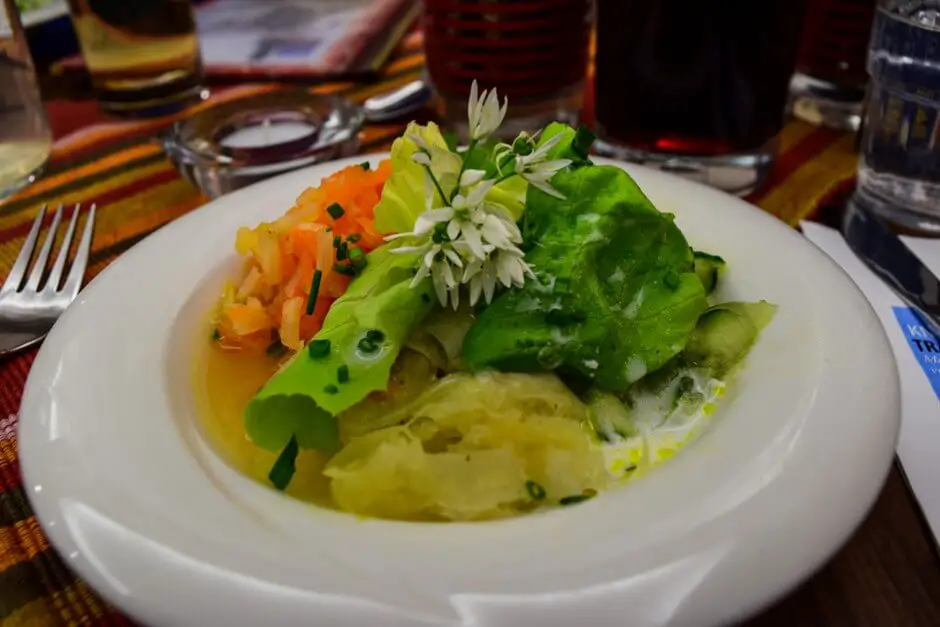
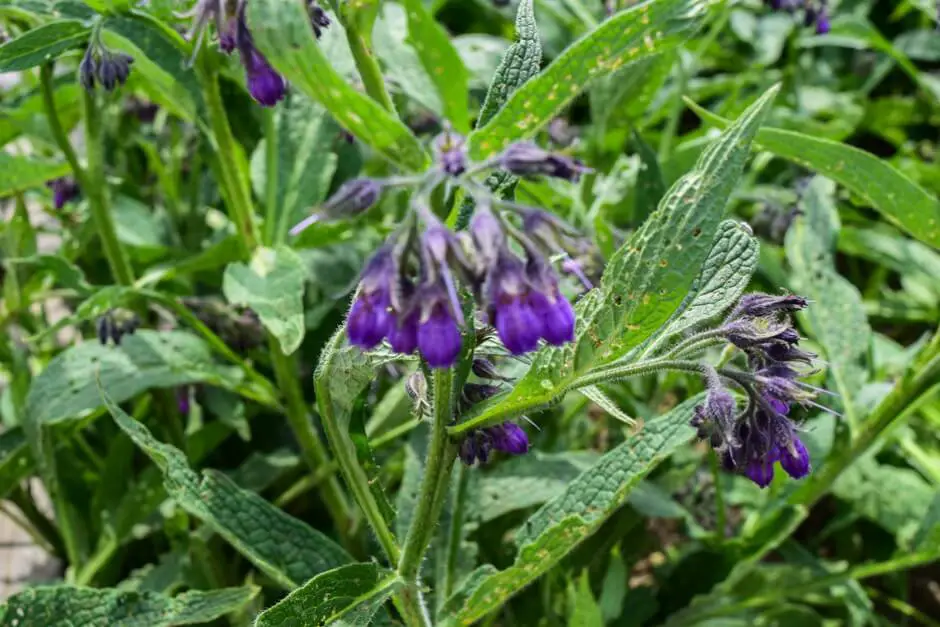
Nutrition in Traditional European Medicine
Nutrition is important in traditional European medicine. In Bad Mühllacken, this is the main focus. In the herb garden, which was until recently looked after by Sister Johanna, the current superior, local herbs are grown. These can also be found in the dishes served in the restaurant.
The dishes are then cooked by Martin Thaller, who has also trained as a nutritionist. He also developed many of the recipes himself. Here, guests can get everything from lactose-free and gluten-free to vegan food. Our lunch shows a cross-section of what is served: celery schnitzel, chicken drumsticks, alkaline dumplings and a salad decorated with herb blossoms from the herb garden. Anyone who wants to can also go on a fasting cure in Bad Mühllacken.
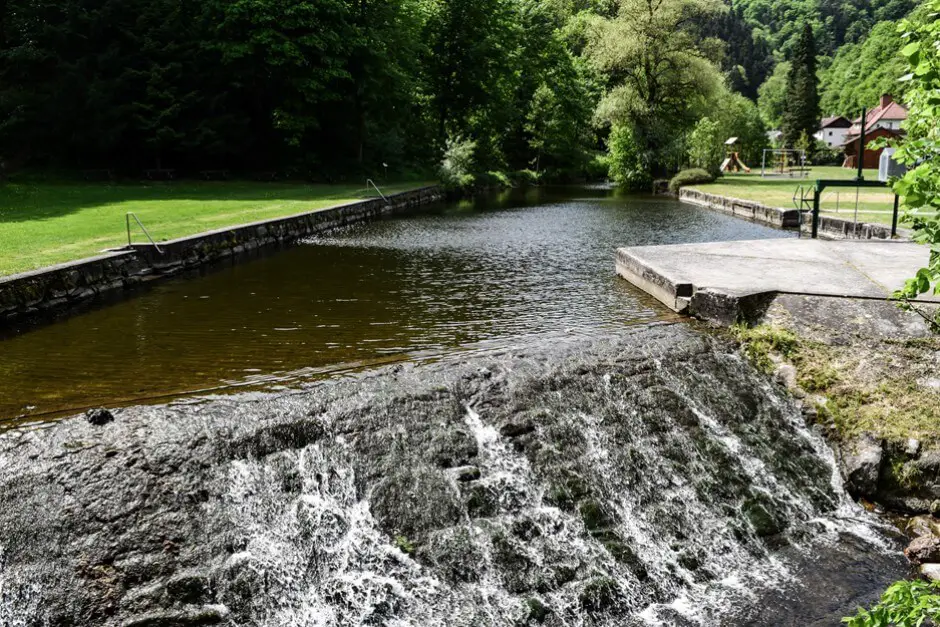
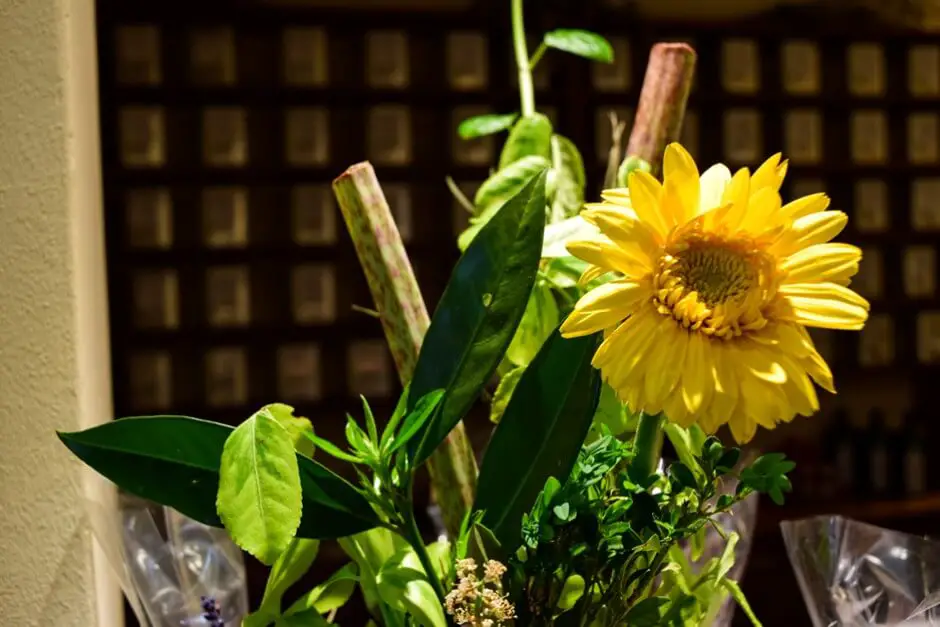
Movement plays a role
Movement is very important in both houses. You can tread water in the herb garden and in the house in Bad Mühllacken, according to Sebastian Kneipp, and also go for relaxing walks and hikes in the neighboring river valley of the Pesenbachtal. In Bad Kreuzen, the view of the surrounding area entices guests to go for walks or hikes. However, you should not forget to bring a backpack. Wyda exercises are offered in the morning, for example. If you want, you can also do a Kneipp walk in the Kneipp pool before going to bed.
Further treatments
Other treatments include the hay bag, which is still filled by hand in both houses today. Friedrich Kaindlstorfer, the managing director of Bad Kreuzen, also swears by the salt coat, a linen coat that is dipped in ice-cold salt. Wrapped up in it, you are covered with blankets. This treatment is then said to have a detoxifying effect.
You can try out the methods of Traditional European Medicine yourself, for example, at:
Sisters of Mary of Carmel
Peace Square 1
4020 Linz
Austria
(T) + 43 (0) 732 775654
(F) + 43 (0) 732 775654-21
marienschwestern-linz@kloesterreich.at
Curhaus.at
In the Mühlviertel we have now discovered another monastery that is worth a visit: Schlägl Abbey in the Bohemian Forest.
Questions and answers about a monastery holiday in Austria
Can you stay overnight in Austrian monasteries?
Yes, many monasteries in Austria offer guests the opportunity to stay overnight for a few days or even weeks. These stays are often simple but comfortable and allow a conscious break from everyday life. Some monasteries offer special programs such as silent retreats, meditations or communal prayer times, while others simply offer a quiet retreat in the middle of nature. Monasteries such as St. Lambrecht or Göttweig are particularly popular and are open to both tourists and seekers.
Which monasteries in Austria are particularly worth seeing for visitors?
Austria has an impressive monastery landscape with architectural masterpieces and spiritual centers. Particularly worth seeing are the Benedictine Abbey of Melk with its magnificent baroque architecture, the Admont Abbey with its world-famous library, or the Heiligenkreuz Abbey, where Gregorian chants can still be heard every day. Those who prefer something quieter can also find smaller, lesser-known monasteries, which are often hidden in idyllic landscapes and offer a special ambience.
Which monasteries offer special programs for travelers?
Many monasteries have opened their doors to travelers and offer programs for the body and mind. In addition to classic spiritual offerings such as retreats or meditation weeks, some monasteries also offer creative workshops, herbal seminars or even yoga retreats. The St. Florian Monastery invites you to organ concerts in its impressive church, while the Gut Aich Monastery teaches natural medicine and monastic craftsmanship. This way you can not only find peace, but also take new inspiration home with you.
What should you keep in mind when visiting a monastery?
A monastery is a place of silence and reflection, so it is important to behave respectfully. This means wearing appropriate clothing, avoiding loud conversations and adhering to the rules of the community. In some monasteries, certain areas are not accessible to visitors because monks or nuns lead their daily lives there. If you want to attend a service, find out about the procedures beforehand so that you can fit in well with the community.
What role do monasteries play in Austria today?
Monasteries are not only historical buildings, but also living places of faith, education and culture. Many monasteries run schools, libraries or art collections and are important cultural centers. Other monasteries are involved in social projects or offer a place of retreat for people looking for a break. At the same time, they are tourist attractions that attract numerous visitors every year - be it because of their impressive architecture, the spiritual atmosphere or the beautiful monastery gardens.
Travel organization for the three monasteries:
Parking at the airport
Here you can reserve your parking space at the airport.
Getting to the three monasteries:
Compare and book flights here* (Advertisement). Lufthansa, Austrian Airlines and Swiss fly to Vienna, Salzburg or Linz. You can then continue your journey by rental car, bus or train.
Car Rentals:
Rent a car - book quickly and easily!
Hotels:
If you do not want to stay in the pen, but only want to use the offers there, that is also possible. Hotels in St. Lambrecht * or Bad Kreuzen * you can, for example, book through our partner booking.com.
If you book via a link marked *, we receive a commission, which we use to run this blog.
Do you also know:
- Time out in the monastery in Stams Abbey in Tyrol
- Enjoy a break for the soul in these monasteries
- Why is the Therme Loipersdorf the Top Wellness Therme of Styria Spa?
- Vancouver Island Spa Hotels between Port Hardy and Victoria
- Do I need an ETIAS Weaver to enter Europe?
Slow Travel Tips you can also find it here. Also discover Monasteries and churches. Do you also know Admont Abbey in Styria?
Not enough of monasteries? Anita from Gailtal on Tour was also there Monastery Wernberg near Villach.
Source: own research on site. We would definitely like to thank Klösterreich for inviting us on this trip to the three monasteries in Austria. However, our opinions remain our own.
Text: © Copyright Monika Fuchs and TravelWorldOnline
Photos: © Copyright Monika Fuchs and TravelWorldOnline
Video: © Copyright Petar Fuchs and TravelWorldOnline
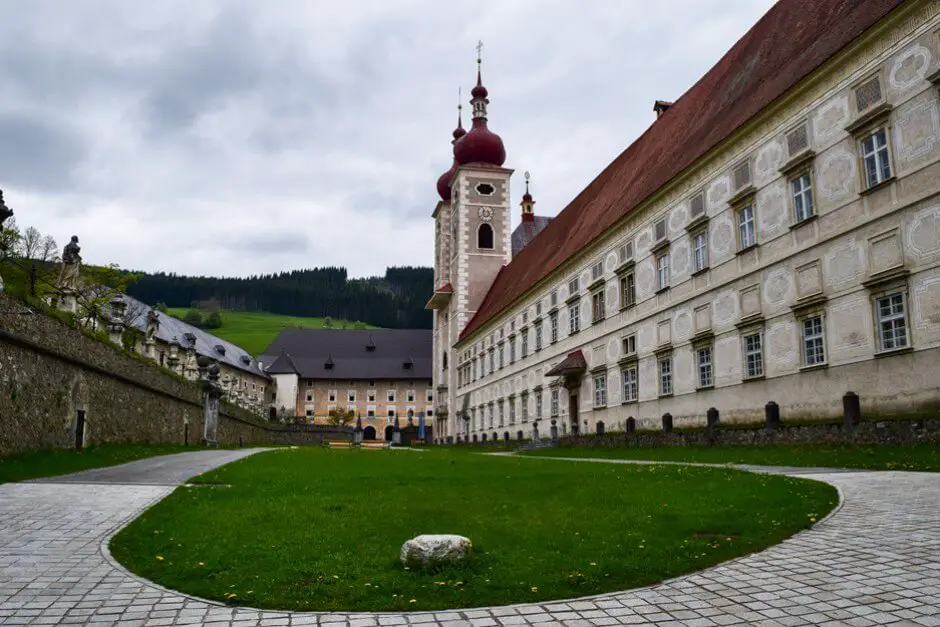

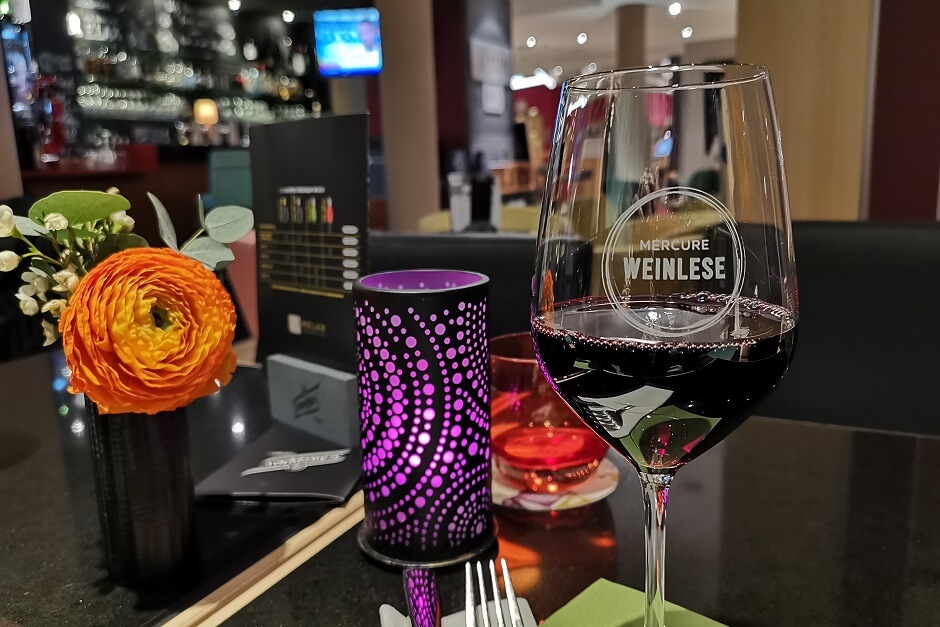
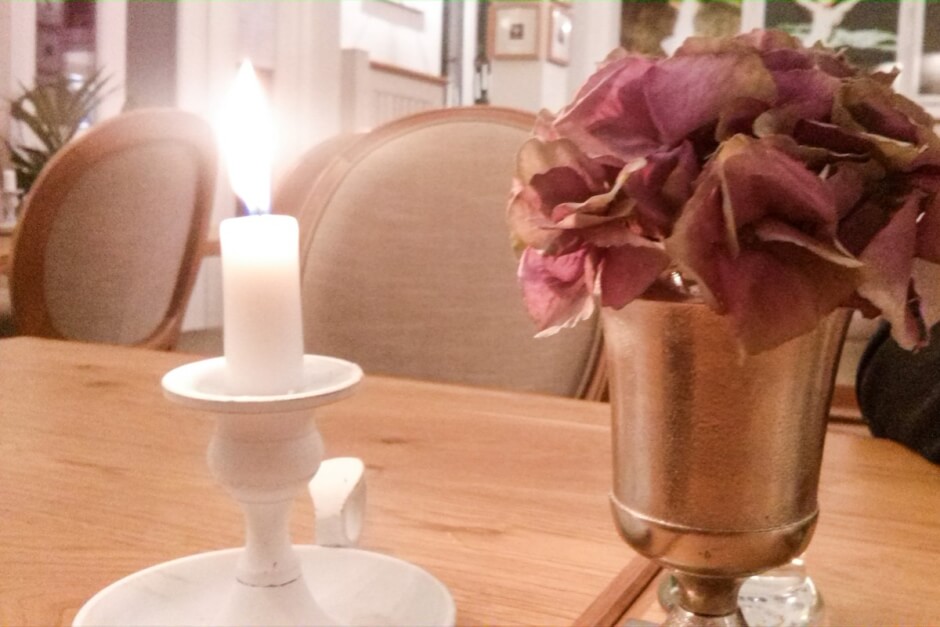
These monasteries are really adorable. I'm happy if you like it here in Austria. LG!
We like Austria very much. We discover new interesting places with each visit.
Austria is just great :-)
Lg
Alex & Birgitta
I can only agree with that, dear Alex and dear Birgitta. We especially like how versatile the country is.
That sounds really exciting. I imagine, this monastic silence is an optimal environment, for example, to retire to write. Walk in the monastery garden, look at the flowers, a little contemplation and good food: rest for body and soul. And silence.
To write, a stay in the monastery is perfect. There is nothing that distracts you. And collect ideas in the monastery garden - a great idea.
An exit on time in a Benedictine monastery can be beneficial. Leaving everyday life behind and giving in to the strict rhythm of the rule of the Order gives room for reflection. Much today demands attention. Our time is getting more and more tightly timed. Easily creates stress with unpleasant consequences. A stay in the monastery can help to look back inside and to find the inner balance. Greetings Andreas
You get an eye for the essentials again, Andreas. I think you're right.
It is exciting how different monasteries have adapted to our needs and offer their guests a certain luxury. I myself love the “Spartan” retreat into monastic life. After a few days with little (digital), culinary and other distractions, I can appreciate our “everyday luxury” much more.
Yes, that surprised me too. But it does not have to be that Spartan with me. The roast with bread dumplings was delicious :). But the silence and the retreat in an environment without TV and internet is doing really well.
That's another world, but I can well imagine a few days doing well in a monastery. To reflect on what is really important to you. Anyway, your report sounds like a few relaxing days and shows that you do not have to do without any luxury at all.
You're right, Antje. It's another world, far removed from what we experience every day. Here calm and silence dominate.